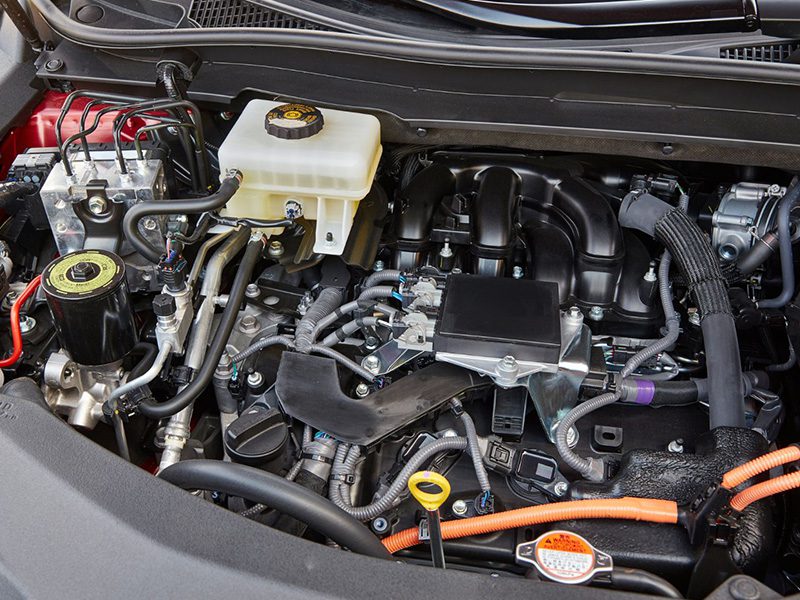When the PCV valve starts giving trouble, your car shows signs you can’t ignore, and that can result in rough performance. In this guide, you’ll see what usually happens when the PCV valve goes bad, how you can test it in simple ways, and the point when replacement becomes the only fix for your car to run steadily.
What Is a PCV Valve and How Does It Work?
Believe it or not, there is a little valve in your vehicle that is really an important part of your car engine that controls all the blowby by relieving crankcase pressure. It’s a PCV valve, positive crankcase ventilation. It does exactly what the name says.

What happens is that when there is fresh air down in that engine, all the stuff inside the engine gets sucked out and reburned. What stuff? All that blowby that’s going by those piston rings, and every engine has some.
How does the PCV valve work? Well, if the car is not running, there is a spring in it that actually keeps it closed, so you don’t get any fumes out of your vehicle. If the engine is idling or decelerating, that’s a massive amount of vacuum, not a good time to suck it in. So, the valve pulls all the way up, and it’s virtually closed.
The best time that this valve works is actually at normal operation, acceleration, or high load. In this state, the PCV valve opens partially, and then when you get on it with acceleration or a lot of load, that’s when it’s about midway open, and you’re sucking all that blowby out of the crankcase.
What Happens When the PCV Valve Goes Bad?
Let’s go ahead and jump into some of the most common signs and symptoms of a faulty PCV valve.
Symptom 1. Oil Consumption
The first symptom you’ll witness due to a bad PCV valve is oil consumption.

This is most common when the PCV valve fails in a stuck-open position. This allows the crankcase ventilation system to actually pull excess pressure from the crankcase during high vacuum situations.
In high vacuum situations, PCV should be closed and would normally be closed, but if it’s stuck open, oil can actually be pulled from the crankcase straight into the motor and be burned off by the cylinders. So this will result in the engine not only consuming oil, but you may also notice a bluish white smoke from the exhaust.
Symptom 2. Rough Idle and Poor Performance
Moving on to symptom number two, you got a rough idle, stuttering, poor performance, and poor engine operation in general. This is something that again happens when the PCV valve fails in a stuck-open position. When that occurs, this excess pressure allows the engine to pull in additional air, which can throw off your air-fuel ratios. This can lead to rough idle, stuttering, hesitation, engine misfires, and poor overall operation of the engine.

Symptom 3. Check Engine Light
The next symptom of a bad or faulty PCV is the dreaded engine light. Stuck-open, stuck-closed, or a clogged valve can be the reasons for these codes. But you need to remember here is that any issue with the whole positive crankcase ventilation system can throw the check engine light error, and not just for the PCV valve.

Not all vehicles monitor the PCV system, especially older vehicles, but most modern engines from 2010 up should monitor the PCV system.
Symptom 4. Oil Leaks
Oil leaks are another sign of a faulty PCV valve. Oil leaks are something that tend to occur when the valve is clogged or fails in a closed position.
When the valve is open, it vents the gases and the pressure out of the crankcase. When it is stuck shut, pressure is then allowed to build up in the motor’s crankcase. That same pressure is going to escape somewhere, and the easiest way for it to escape is out of the head gasket, oil gaskets, O-rings, seals, intake tracts, and any of those rubber components sealing the engine.

Symptom 5. Sludge Buildup
Last but not least, the fifth symptom of a faulty PCV valve is sludge buildup, or sludge accumulation in the engine.
The PCV valve is under the valve cover, and it produces a lot of vacuum. So, it’s easy to suck some oil up in this valve. If you take a look at the way some of the new oil that goes in these engines, like 5W50 or 0W50, there are two things going on.
Number one, the oil is thinner, and you’re putting in these large splits, 5W50, 0W50. Anytime you do that, the oil has a tendency to have something called volatility. And the way that the oil is made, the light ends of the product tend to go through the crankcase ventilation system and leave the crankcase.
So, it gets sucked up on the PCV valve, and it ends up with a lot of sludge and stuff, resulting in it being stuck open or closed.

The PCV valve also ventilates gases from the crankcase. These gases tend to contain unburnt fuel as well as water vapors. When that is allowed in the crankcase due to a bad valve and cannot be ventilated, it can mix with the oil, cause oil dilution, and then poor oil quality will start building up and accumulating throughout the engine, which is known as sludge or sludge buildup.
How to Test If a PCV Valve Is Bad?
All PCV valves have a rubber hose attached to them, and most are inserted in a grommet in the valve cover. Just wiggle it out of the grommet and detach it from the hose.

All PCV valves look dirty and cruddy, so don’t pay attention to that. You want to shake it and hear a solid metallic sound. If you do, your PCV valve is good; otherwise, you need to replace it.
Can I Replace My PCV Valve Myself?
Yes, you can replace the PCV valve yourself if it goes bad. Just like you took the PCV valve to check it, buy a new one, attach it to the hose, and insert it in the grommet.
Conclusion
So now you know what a PCV valve is, how it works, and what symptoms the engine shows when it goes bad. PCV valve replacement is quite easy, and you can do it in a few minutes.
Nanjing Woda Auto Technology Co., Ltd. has over 25 years of experience providing quality engine parts to global B2B customers. We supply professional buyers worldwide with reliable solutions backed by industry expertise.
For any kind of engine parts, reach out today to request a quote and get dependable products that drive your business forward.






